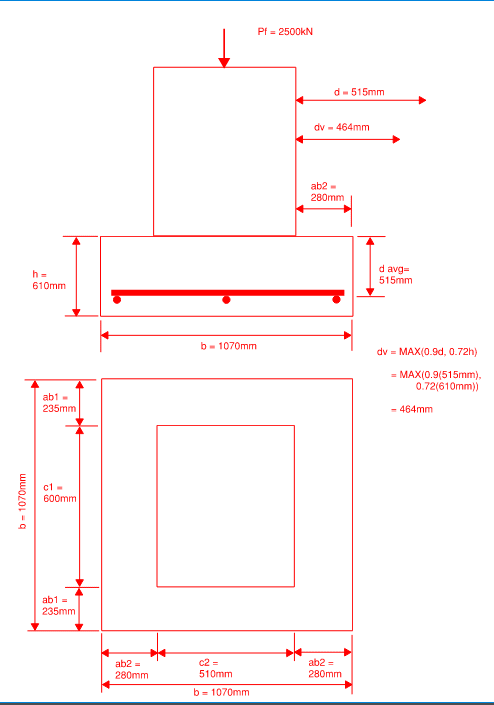canstruct12
Structural
Hello All,
I am looking at an existing footing. In trying to determine the shear force acting on the footing the calculation based on CSA A23.3 shows the location where i would take the shear force to be outside of the physical dimensions of the footing. ab (distance from pier face to edge of footing) = 280mm, d = 515mm and dv = 464mm (see attached sketch). Based on this, I am unsure of how to determine the Vf (i.e. where would I take the location of one-way shear and the area to be used to determine the reaction force from the bearing surface). This footing was constructed in 1960, and would have been designed to the code at the time.
The original as-builts indicate the material below the footing to be rock with a 40000 psf (~1940 kpa) bearing capacity

If anyone has any insight or experience analyzing footings like this, any information, references or analysis techniques would be greatly appreciated.
Thanks
I am looking at an existing footing. In trying to determine the shear force acting on the footing the calculation based on CSA A23.3 shows the location where i would take the shear force to be outside of the physical dimensions of the footing. ab (distance from pier face to edge of footing) = 280mm, d = 515mm and dv = 464mm (see attached sketch). Based on this, I am unsure of how to determine the Vf (i.e. where would I take the location of one-way shear and the area to be used to determine the reaction force from the bearing surface). This footing was constructed in 1960, and would have been designed to the code at the time.
The original as-builts indicate the material below the footing to be rock with a 40000 psf (~1940 kpa) bearing capacity

If anyone has any insight or experience analyzing footings like this, any information, references or analysis techniques would be greatly appreciated.
Thanks
